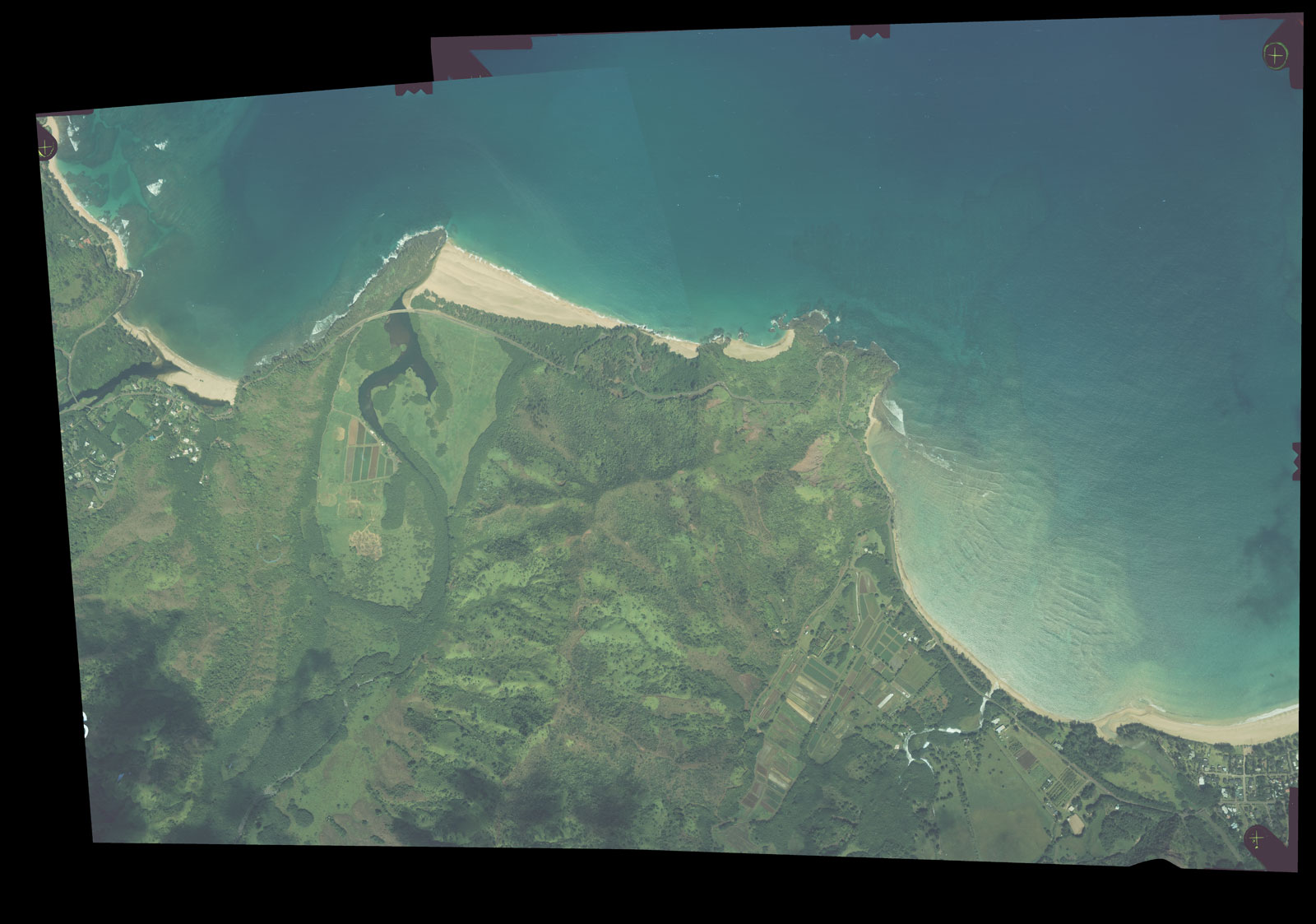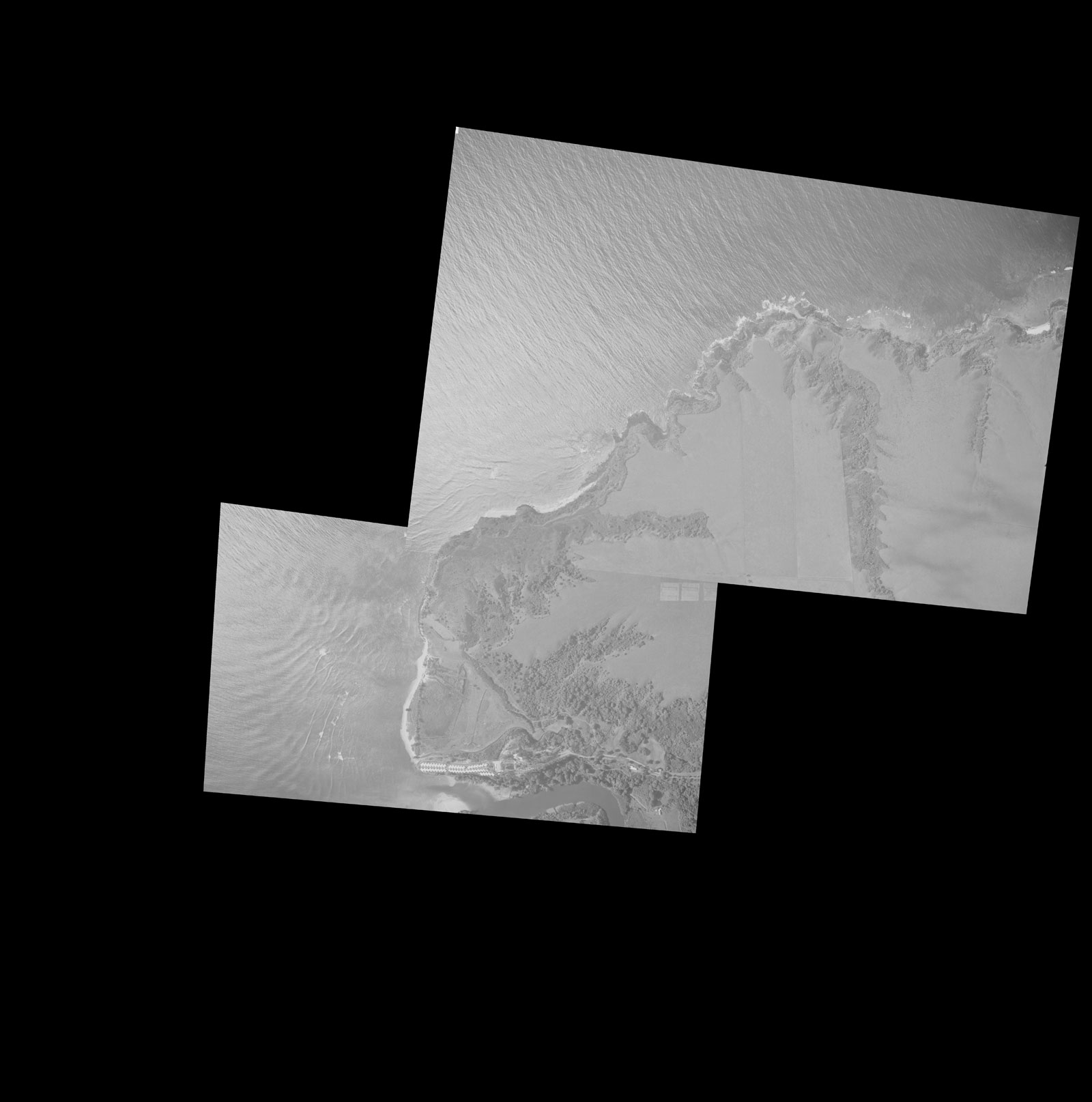The Hanalei Bay study area (transects 60 – 241) is located on the north shore of Kauaʻi. The study area is bounded to the east by Hanalei River and to the west by Makahoa Point. The bay is exposed to large seasonal swell during the winter months and is relatively calm during the summer. The sandy shoreline is composed of carbonate sand and terrigenous sediment.
Overall, the Hanalei Bay study area is experiencing accretion with an average shoreline change rate of 0.5 ft/yr. The bay lends itself to division into three portions. The western portion (transects 60 – 138) has experienced slight erosion over the period of study with an average shoreline change rate of -0.1 ft/yr. This section of the study area contains Waikoko Beach (transects 60 – 94) which is eroding with an average shoreline change rate of -0.6 ft/yr. The central portion of Hanalei Bay (transects 140 – 194) is experiencing accretion with an average shoreline change rate of 1.3 ft/yr. This section of the study area contains Waioli Beach Park (transects 168 – 171) which is experiencing accretion with an average shoreline change rate of 1.9 ft/yr. The eastern portion of the area (transects 196 – 241) is experiencing accretion with an average shoreline change rate of 0.4 ft/yr. This section contains Black Pot Beach Park (transects 234 – 241) which lies at the mouth of Hanalei River. The park is eroding with an average shoreline change rate of -0.5 ft/yr. Previous studies* did not analyze the Hanalei Bay study area shoreline.
*Makai Ocean Engineering and Sea Engineering, 1991 Aerial Photograph Analysis of Coastal Erosion on the Islands of Kauai, Molokai, Lanai, Maui, and Hawaii. State of Hawaii Office of Coastal Zone Management Program.
Last updated: July 2021
Directions: To view a larger image of the photo, click on the image. To download the georeferenced TIFF version of the photo, click on the name
Partial coverage:























